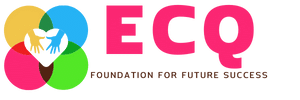
Content marketing is a powerful tool for attracting and engaging potential customers. But turning those casual blog readers into loyal customers? That’s where the rubber meets the road.
This comprehensive guide will equip you with the strategies and tactics needed to bridge the gap between blog readership and customer conversion. We’ll delve into understanding your audience, crafting compelling content, and implementing effective conversion techniques to nurture leads and watch your customer base flourish.
Understanding Your Audience: The Bedrock of Conversion
Before crafting content that converts, you need to understand the people you’re trying to reach. Who are your ideal customers? What are their needs, pain points, and aspirations? What kind of content do they consume and how do they prefer to interact with it?
Developing buyer personas is key to this process. These detailed profiles represent your ideal customers, encompassing their demographics, behaviors, goals, and challenges. By understanding your personas, you can tailor your content to resonate with their specific interests and needs.
Content that Captivates and Converts
With a firm grasp of your audience, it’s time to create content that grabs their attention and compels them to take action. Here are some essential elements to consider:
1. Value-Driven Content:
Focus on providing genuine value to your readers. Solve their problems, answer their questions, and offer insights that make their lives easier or better. Informative blog posts, educational guides, and actionable tips are all excellent ways to demonstrate your expertise and establish yourself as a trusted resource.
2. Storytelling Power:
Weave narratives into your content. People connect with stories on an emotional level, making them more likely to remember your message and take action. Use case studies, customer testimonials, and personal anecdotes to bring your brand to life and create a deeper connection with your audience.
3. Variety is the Spice of Content:
Don’t get stuck in a rut with the same old blog posts. Experiment with different content formats like infographics, videos, podcasts, and webinars to keep your audience engaged and cater to various learning preferences.
4. The SEO Imperative:
Optimize your content for search engines to ensure your ideal customers can easily find you. Conduct keyword research, incorporate relevant keywords naturally, and utilize meta descriptions and title tags to entice clicks.
5. The Call to Action:
Never leave your readers hanging. Tell them what you want them to do next, whether it’s subscribing to your newsletter, downloading an ebook, or contacting you for a consultation. Make your calls to action clear, concise, and irresistible.
Nurturing Leads: From Seed to Bloom
Once you’ve captured your audience’s attention, it’s time to nurture those leads and guide them towards conversion. Here are some effective strategies:
1. Email Marketing:
Email marketing remains a powerful tool for nurturing leads. Segment your email list based on interests and behavior, and send targeted campaigns that provide ongoing value and gently nudge subscribers towards the sales funnel.
2. Lead Magnets:
Offer valuable resources like ebooks, white papers, or webinars in exchange for contact information. This incentivizes readers to subscribe and allows you to capture important lead data.
3. Social Media Engagement:
Foster conversations with your audience on social media platforms. Respond to comments, answer questions, and share engaging content that keeps them coming back for more.
4. Personalized Content:
Personalize your interactions with leads whenever possible. Use their names in emails, tailor your recommendations based on their browsing history, and segment your content to deliver relevant information.
5. Remarketing and Retargeting:
Don’t give up on website visitors who haven’t converted yet. Utilize remarketing and retargeting campaigns to remind them of your brand and encourage them to return to complete a desired action.
Conversion Optimization: The Final Push
With your audience engaged and leads nurtured, it’s time to optimize your website and landing pages for maximum conversion. Here are some key areas to focus on:
1. User-Friendly Design:
Ensure your website is easy to navigate, visually appealing, and mobile-responsive. Users should be able to find what they need quickly and effortlessly.
2. Compelling Calls to Action:
Make your calls to action prominent, clear, and action-oriented. Use strong verbs and language that entices users to click.
3. Frictionless Forms:
Simplify your forms to avoid discouraging conversions. Collect only the essential information needed and keep the process











Leave a Reply